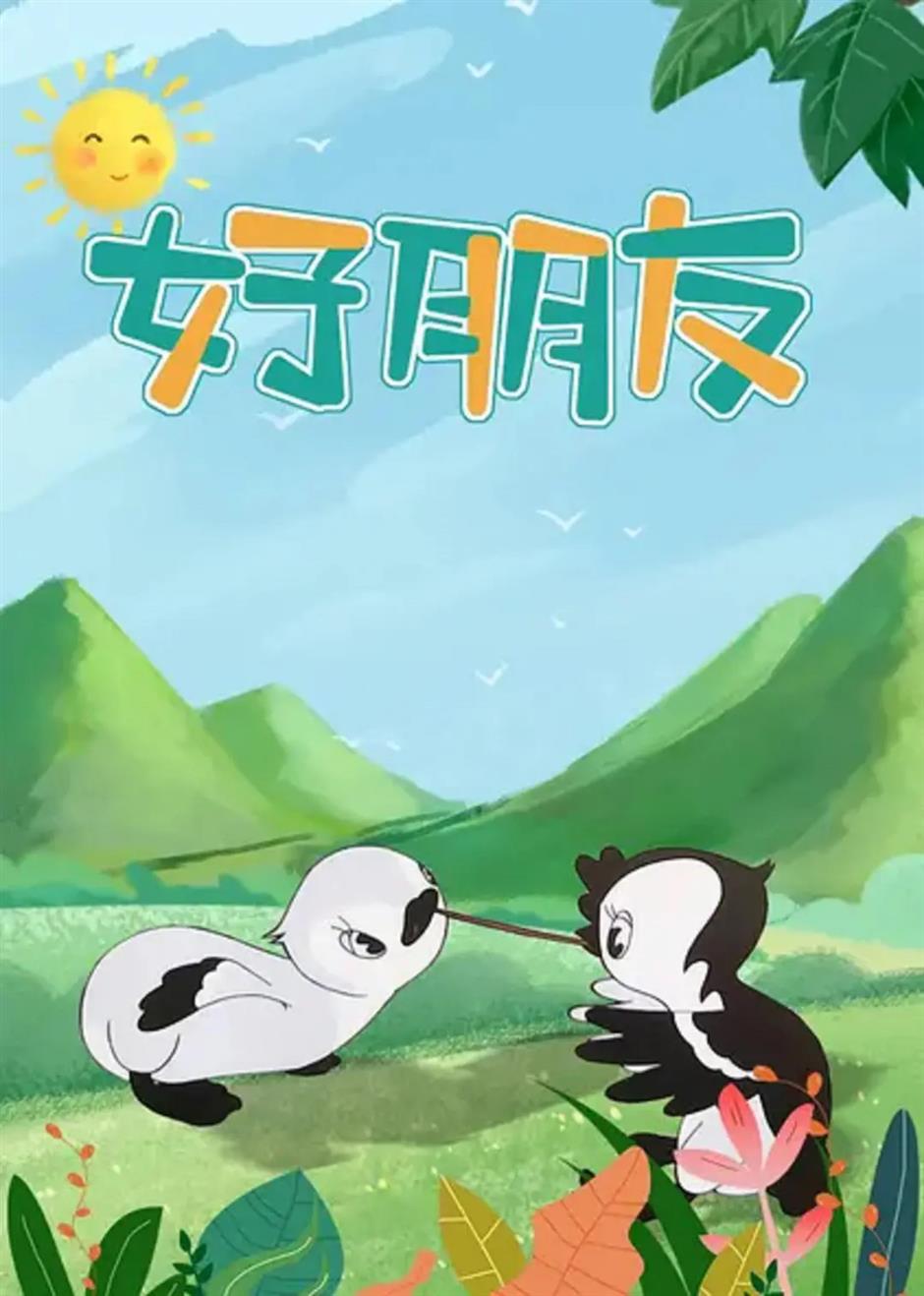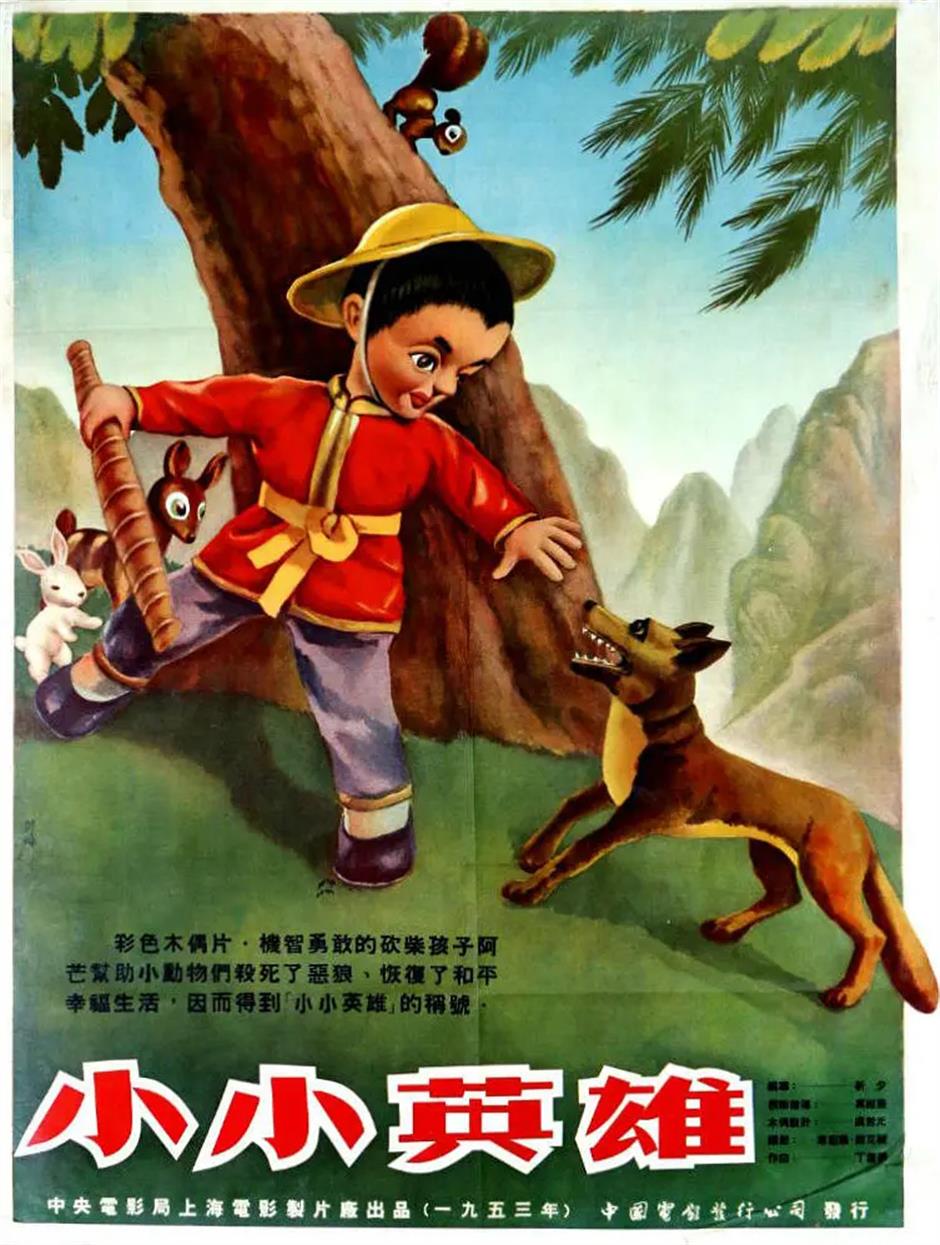'Lights, Camera' presents: Chinese animation progress from 1949 to 1956

The animated film 'Proud General' (1956) was a remarkable leap in the development of Chinese animation as the Chinese school took shape with its distinctive artistry, simple elegance and beauty.
In this episode of our cultural column "Lights, Camera," the tremendous development of the Chinese animation industry during from 1949 to 1956 will be unveiled with a few interesting and little known stories. It was a new chapter of Chinese animation based on the endeavors of pioneering artists.
After the founding of the People's Republic of China on October 1, 1949, film companies in many Chinese cities and regions started to set up animation units in order to create more high-quality home-grown productions.
In March, 1950, the animation unit of the Northeast Film Studio moved to Shanghai and became part of the then-Shanghai Film Studio. The unit, with only 22 animators at that time, received a warm welcome and much encouragement from former Shanghai Mayor Chen Yi.
In 1957, the unit was developed into the Shanghai Animation Film Studio, which impressed the world with the Chinese school of animation through diverse elements from traditional Chinese culture and arts.
The first production by the unit was "Thank You, Kitty" (1950), an animated film with a fairytale theme. Only 14 minutes long, the film vividly depicts a cute kitty that catches mice with its wisdom.

A poster advertises 'Thank You, Kitty.'

A poster advertises 'Good Friends.'

'Why the Crow is Black-Coated' was China's first color animation.
Animals became main cartoon characters of the unit's early productions such as "A Cat Goes Fishing" (1952) and "Good Friends" (1954). Shot from the perspective of children, these animations were hailed by Chinese kids.
Puppet film "Little Hero" (1953) marked a new breakthrough of Chinese animation from black and white to color.
It took the unit more than a year to make the 10-minute color puppet film despite a lack of materials and equipment. Adapted from the fairy tale "The Red Cherry," the film centers on a little boy's courageous fight against wolves to protect small animals in a forest.
The success of the movie laid a solid foundation for the production of China's first color animation, "Why the Crow is Black-Coated" (1955). Directed by Li Keruo and Qian Jiajun, the film tells the story of a proud and arrogant crow, with beautiful and shining feathers, who unexpectedly burns them when dancing around wildfires. After the release of the movie, Chinese animation entered the era of color films.
China's first internationally acclaimed animation was the 1955 color puppet film "The Magic Brush." The film revolves around cowboy Ma Liang's connection with a magic brush and his efforts to help the poor villagers. It was regarded as a classic of Chinese animation owing to its ingenious plot and romantic way of expression in art.

A poster advertises the puppet film 'Little Hero.'

The classic animation 'The Magic Brush' received an international award in Venice, Italy.

'Proud General' depicted ancient Chinese people's activities, such as cauldron lifting and archery.
In August, 1956, the "The Magic Brush" garnered the first prize for Children's Entertainment Films at the 8th Venice International Children's Film Festival. It was the first time a Chinese animated film had received an international award.
The unit's fable-inspired animation "Proud General" (1956) was another remarkable leap in the development of Chinese animation as the Chinese school of animation began to take shape with its distinctive artistry, simple elegance, and beauty.
The modeling of characters in the film drew on the art of Peking Opera's facial makeup and costumes. The film backdrop – ancient palace buildings of splendor and magnificence – was inspired by ancient Chinese murals. With a special artistic approach, it also depicted ancient Chinese people's activities of cauldron lifting and archery.
The film showcased the aesthetic taste of the Chinese people and fully integrated cartoon art with Chinese traditional culture. From then, generations of Chinese animators started to develop the Chinese school of animation, a pearl of the animation cinema.
From 1949-1956, China produced a total of 24 animations to cater for children and teenagers in the country. Batches of professional animators were cultivated. In the mid-1950s, the number of animators at the animation unit of Shanghai Film Studio increased from its former 22 to more than 200.
Chinese animated films were no longer imitating foreign productions, as they formed their own characteristics with influences from traditional arts, folklore, and legends.

A poster shows Walt Disney's animated feature film 'Cinderella.'

A poster for 'Peter Pan.'
Meanwhile, the period from 1950 to 1966 was a flourishing phase of American animation. During this period, Walt Disney released a classic animated feature film almost every year, including "Cinderella" (1950), "Alice in Wonderland" (1951), and "Peter Pan" (1953). Walt Disney became a tycoon of the animated film industry.
According to Professor Chen Zhihong, a veteran animation director and scholar from Shanghai University's Shanghai Film Academy, the 1950s was a golden age for Disney animation, and many of its classic animated feature films revitalized the sluggish film market after World War II.
"More Disney's animated features at that time, such as 'Cinderella' and 'Sleeping Beauty,' took humans as the main characters," Chen said. "It reflected that Disney's feature-length animations began to cater for older children while younger children remained the main target audience of its animated short films."
He spoke highly of the artistry and influence of the Chinese animation "Proud General," a satire of arrogant people who did not have a motive for progress.
"Characters in the film drew inspiration from Peking Opera, especially the essence of the traditional theater's facial makeup, music, and vocal art," Chen added. "It pioneered the style of the Chinese school of animation, China's own mature and distinct animation language."
In the next episode, we will explore and show the charm of this school through a few time-honored and influential Chinese animations produced after the founding of the Shanghai Animation Film Studio in 1957.

A poster for 'Alice in Wonderland.'

A poster for 'Sleeping Beauty.'















